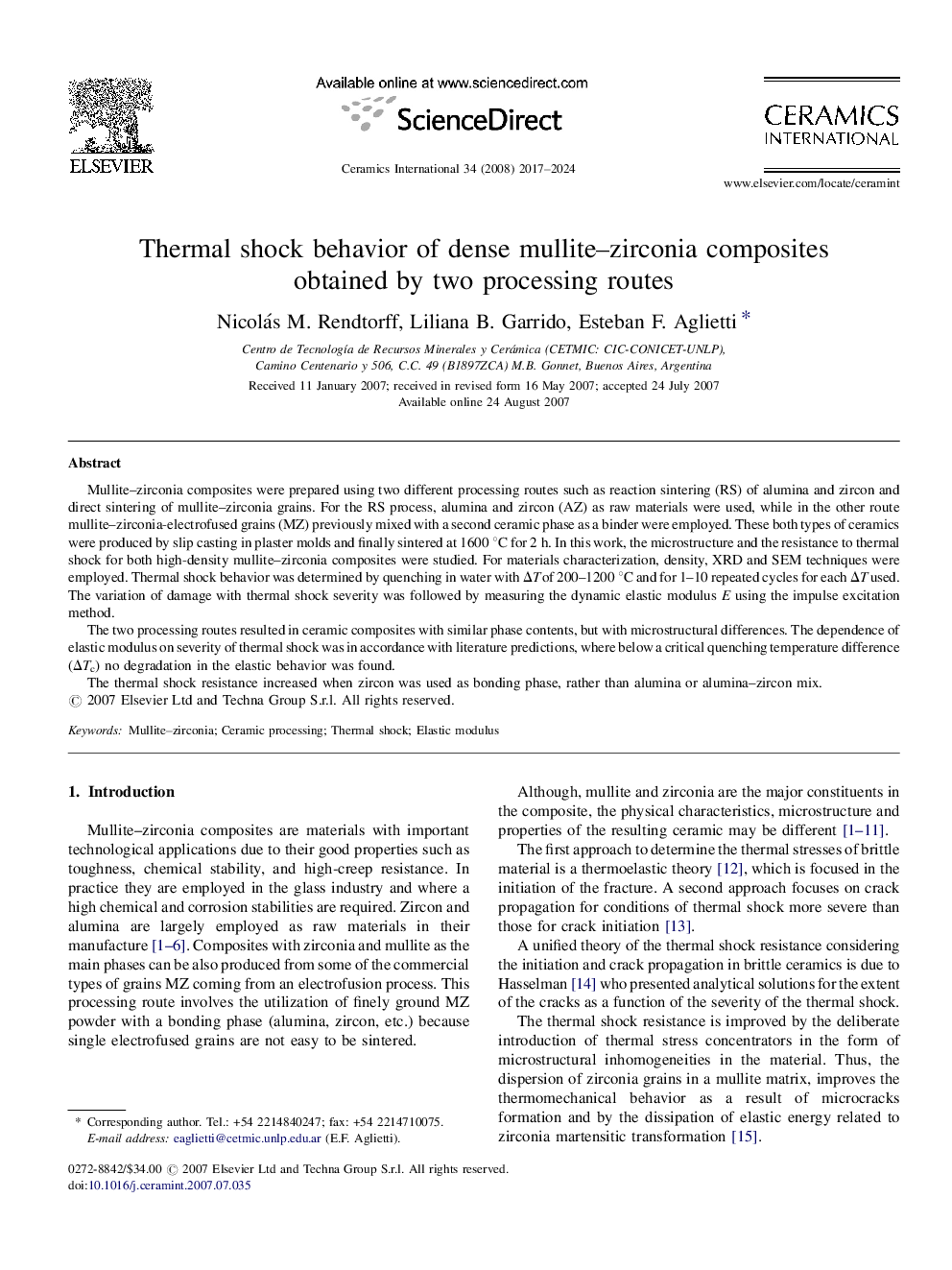| کد مقاله | کد نشریه | سال انتشار | مقاله انگلیسی | نسخه تمام متن |
|---|---|---|---|---|
| 1464359 | 989660 | 2017 | 8 صفحه PDF | دانلود رایگان |
Mullite–zirconia composites were prepared using two different processing routes such as reaction sintering (RS) of alumina and zircon and direct sintering of mullite–zirconia grains. For the RS process, alumina and zircon (AZ) as raw materials were used, while in the other route mullite–zirconia-electrofused grains (MZ) previously mixed with a second ceramic phase as a binder were employed. These both types of ceramics were produced by slip casting in plaster molds and finally sintered at 1600 °C for 2 h. In this work, the microstructure and the resistance to thermal shock for both high-density mullite–zirconia composites were studied. For materials characterization, density, XRD and SEM techniques were employed. Thermal shock behavior was determined by quenching in water with ΔT of 200–1200 °C and for 1–10 repeated cycles for each ΔT used. The variation of damage with thermal shock severity was followed by measuring the dynamic elastic modulus E using the impulse excitation method.The two processing routes resulted in ceramic composites with similar phase contents, but with microstructural differences. The dependence of elastic modulus on severity of thermal shock was in accordance with literature predictions, where below a critical quenching temperature difference (ΔTc) no degradation in the elastic behavior was found.The thermal shock resistance increased when zircon was used as bonding phase, rather than alumina or alumina–zircon mix.
Journal: Ceramics International - Volume 34, Issue 8, December 2008, Pages 2017–2024
